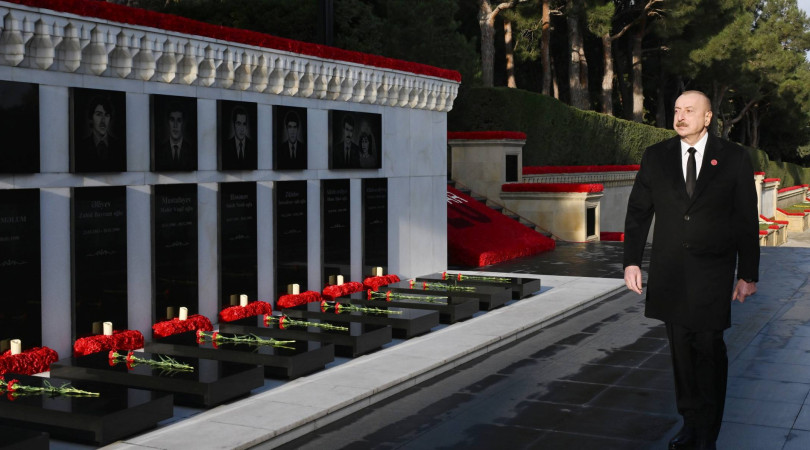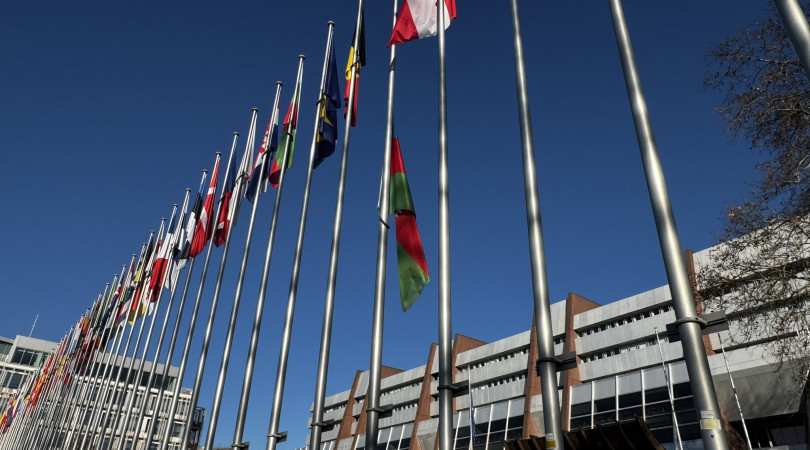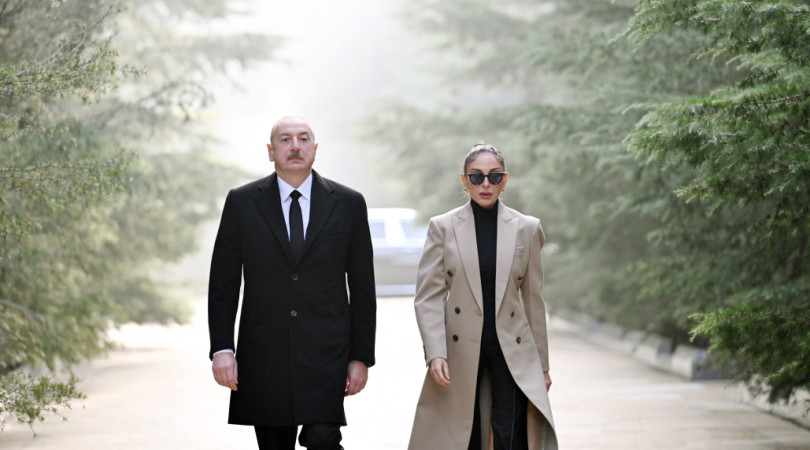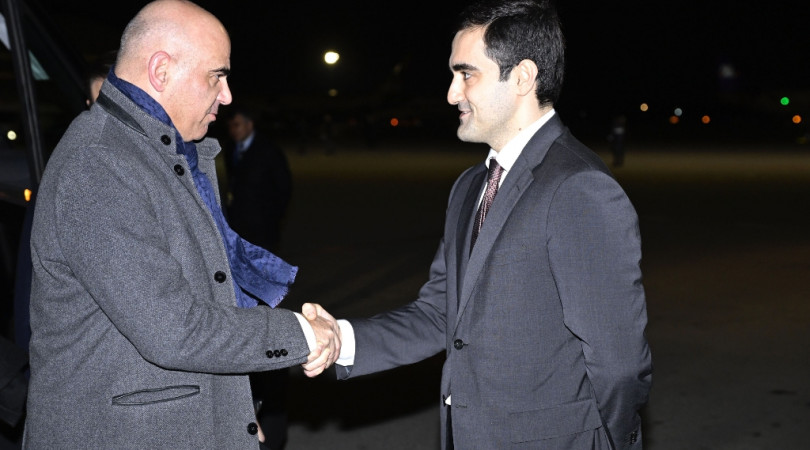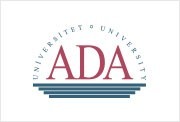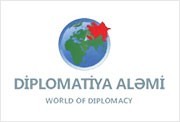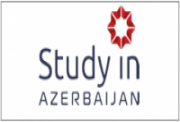The Statement of the Commissioner for Human Rights of the Republic of Azerbaijan (Ombudsman) on the 100th anniversary of 1918 Genocide of the Azerbaijanis
100 years have passed since the genocide committed by the Armenians against the Azerbaijanis in March and April 1918. Among the bloody tragedies faced by our people, this genocide is distinguished for its grave and terrible consequences.
The purpose of ethnic cleansing, genocide and deportation policy of the Armenian nationalists and their supporters against the Azerbaijanis lasted over two centuries was to banish our compatriots from their historical lands and to create a mythical "Great Armenia" state on these territories. From the beginning of XIX c., thousands of Armenian families were moved from Iran and Turkey onto historical territories of Azerbaijan such as Karabakh, Nakhchivan, Zengezur, also Iravan and other provinces.
As a part of this policy, genocide of the Azerbaijanis in 1918 can be shown as an obvious example.
Since March of 1918, thousands of the Azerbaijani civilians have been killed, burned alive only on the ground of their nationality and religion; rare historical monuments, schools, hospitals, mosques were ruined by the armed dashnak-bolshevik gangs, the Armenian nationalists.
The massacres committed in Baku, also other cities and districts of Baku province on March 31 and on April 1-2, 1918 gained mass scale, the Armenian groups murdered 30 000 civilians mercilessly. During that period many old buildings, including Ismailliyya building, which is one of the pearls of the world architecture were scattered shelling; the minarets of Juma and Tazapir mosques were severely damaged.
Later on, the acts of the genocide and plunder were committed against the Azerbaijanis mainly in Shamakhi, Guba, Kurdamir, Salyan, Karabakh, Zangezur, Nakhchivan, Irevan, Shirvan, Lankaran and other provinces with special cruelty.
During these events more than 70 villages of Shamakhi were totally destroyed, 7,000 persons were annihilated. According to the historical sources, 2000 Armenian armed forces and 60 trucks of ammunition sent to Shamakhi in the middle of March is an evidence of preparation to this massacre in advance. In Guba province 122 villages, in Lankaran province 40 villages were burned and destroyed, numerous houses were plundered and hundreds of innocent people were killed.
Though the years passed, those bloody events were not forgotten and they left indelible impressions in memory of our people.
The government of the 1st Democratic Republic of Azerbaijan, the 100th anniversary of which is celebrated this year, has created the Emergency Investigation Commission to investigate the grave crimes committed by the Armenians and has taken a number of measures for keeping the truths revealed by the commission in the memory of the people and delivering it to the world community. However, after the collapse of the 1st Democratic Republic of Azerbaijan, this process was interrupted, the investigation of what happened and the corresponding political and legal assessment of the these events were prevented.
After the restoration of the independence of the Republic of Azerbaijan, the opportunity to learn more about our past has been gained, the truths that was hidden for many years have been gradually revealed, and thus, distorted events appear to be more evident. Genocides, which have been committed against our people from time to time has never received international legal- political assessment, are one of them.
On March 26, 1998 only 80 years after bloody events on March 31, the Decree signed by President Heydar Aliyev “On the Genocide of the Azerbaijani people” provided political assessment to those horrible events; 31 March was declared the "The Day of Genocide of the Azerbaijanis" and every year is commemorated in our country at the state level.
As a result of recent studies, numerous new facts and documents have been collected, it has been proven that the geography of the bloody acts of the Armenian nationalists in March and April 1918 and in the later periods was far more extensive and the number of victims of tragedy was much higher.
Within last period, evidences found ascertained mass slaughters of 1918 committed by the Armenian separatists in Guba province. Innumerable human bones and other material evidences found are visual proofs of their savagery and vandalism during these slaughters. Guba Genocide Memorial Complex was created as evidence and in memory of savagely murder of people in this region. This historical monument is visited by our citizens and foreign guests.
It should be noted that according to the Decree signed by Ilham Aliyev, the President of the Republic of Azerbaijan, on “The 100th Anniversary of the 1918 Genocide of the Azerbaijanis” in order to convey the truth about the human crimes committed by the Armenian-Bolshevik armed groups against the Azerbaijanis 100 years ago, relevant Plan of Actions was approved and is being implemented.
Hence, the UN General Assembly Resolution 96 (I) dated 11 December 1946, states that genocide, besides violating the right of people to life, is one of the gravest crimes.
Elements of the crime of genocide were determined by the Convention on the Prevention and Punishment of the Crime of Genocide adopted by the UN General Assembly Resolution No. 260 (III) dated December 9, 1948.
According to the Convention, genocide is a criminal act planned in advance with intent to destroy, in whole or in part, a national, ethnic, religious, or racial group.
Each of the criminal acts reflected in this Convention were committed by the Armenians against the Azerbaijanis, thus these events should be assessed as genocide from the legal perspective.
The history showed that the Armenian nationalists did not give up their notorious intentions, massacred civilians mercilessly, in order to curtain the crimes committed.
As a result of the next ethnic cleansing and aggression policy started since 1988, Armenia occupied Nagorno-Karabakh which is an integral part of Azerbaijan, as well as seven surrounding rayons, thus 20 percent of the country territories were occupied, one million of Azerbaijanis became refugees and IDPs, their rights were grossly violated. In the course of this occupation, the Armenian nationalists and terrorists committed genocides in Khojaly city, Karkichahan, Malibeyli, Gushchular, Garadagly, Agdaban villages and in other settlements of Azerbaijan.
The international law, as well as UN Security Council Resolutions 822, 853, 874, 884 from 1993, the UNGA Resolution titled “The Situation in the occupied territories of Azerbaijan” of March 14, 2008, Resolution 1416 from 2005 and Recommendation 1690 of the Parliamentary Assembly of the Council of Europe European Parliament's Resolution on Nagorno-Karabakh from October 23, 2013 re-affirm once again that Nagorno-Karabakh and adjacent seven regions are an integral part of Azerbaijan. However, the Armenian side ignores the decisions adopted by international organizations, doesn’t fulfil them, regularly violates the ceasefire regime and creates obstacles to the peace in the region demonstrating unconstructive position as always.
The genocide policy of Armenia against the civilian population continues up to now that results in the killing of civilians, including children.
The Azerbaijani side always tries for peaceful solution to the conflict. From the tribunes of the influential international organizations, including the UN General Assembly Ilham Aliyev, the President of the Republic of Azerbaijan, has repeatedly stated the necessity of resolution of the conflict within the territorial integrity of our country in accordance with the norms and principles of the international law, restoration the territorial integrity of our Republic, withdrawal of occupying forces from the Azerbaijani lands.
Nowadays the world community provides more support for the just position of Azerbaijan and is interested in peaceful settlement to this conflict within the international legal norms. This should be noted that the US New York State Senate and New Jersey State General Assembly passed Resolutions recognizing 31 March as a Day of Genocide of the Azerbaijanis. In addition, the Parliaments of 15 states recognized Khojaly Genocide committed on 26 February 1992 from the perspective of international legal norms and twenty two states of the USA have passed the similar Resolutions.
Paying tribute to the memory of martyrs and those who died during that tragedy and guiding with the above mentioned, as well as norms and principles of international law, I urge to all states and international organizations to recognize this act of genocide in the name of justice, to support our just position and to consolidate and increase efforts in this regard.
These severe crimes against humanity should be legally and politically assessed as genocide acts at the international level, sanctions should be applied by the international organizations against Armenia that committed genocides, Armenia should fulfil the requirements of the international documents on this conflict, the territorial integrity of Azerbaijan and the violated rights of refugees and IDPs should be restored, captives and hostages should be liberated, and they should return to their homes. Also the criminals who killed innocent civilians and committed genocide should be prosecuted before the tribunal and punished.
Elmira Suleymanova
The Commissioner for Human Rights
(Ombudsman) of the Republic of Azerbaijan
16.03.2018
The Commissioner for Human Rights (Ombudsman) of the Republic of Azerbaijan

